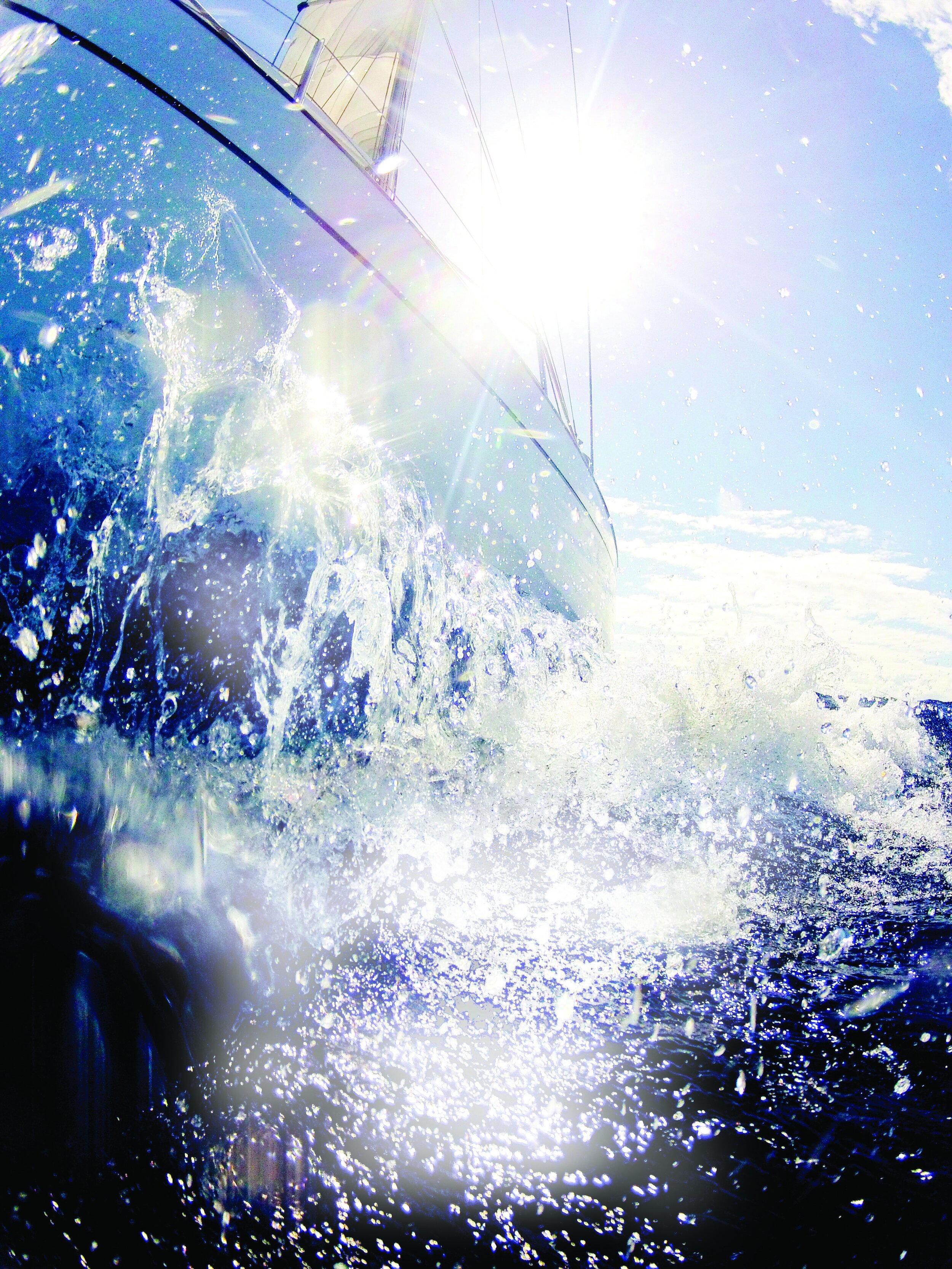
The News, Culture and Practice of Sailing woodenboats
in Australia, New Zealand & The South Pacific.
GRETEL Update
Less well known is the huge effort that went into that campaign 65-years ago, and its uniquely Australian “hands-on” character. When they were not actually sailing, everyone involved contributed their skills, experience and plain hard yakka.
Long-Distance Navigation Without Western Technology
Wet and shivering, I rose from the outrigger of a Polynesian voyaging canoe. We’d been at sea all afternoon and most of the night. I’d hoped to get a little rest, but rain, wind and an absence of flat space made sleep impossible. My companions didn’t even try.
Well Written - Part VI
“The judge, the pianist, and workman,” he wrote, are interpreters. “Interpreters are always necessary because instructions are always incomplete.” The workman can do with his eye what the judge does with intuition and logic, what the pianist does with intuition and ear: he or she can measure with astonishing accuracy those things that can never be specified, isolate nuances that are too subtle to be described. No law book could be complete enough to handle the specifics of every individual case; no musical score could possibly convey how long each note must hang in the air, or precisely how loudly it should sound out; no boat design could determine a single, absolute outcome of every curve.
A Sailing Boat Which Carries a Four Corned Mainsail.
PS we don't have sail numbers as per the regatta sailing instructions because skiffs using characteristic unique symbols out date sail numbers.
Another “Brilliant” Sailing Season After Significant Restoration
Described by WoodenBoat magazine as “one of the best-maintained and sailed classic yachts in the country—if not the world,” the 93-year-old Sparkman & Stephens design came to Rockport Marine last year to capitalize on the company’s traditional wooden-boat building skills to replace aging frame ends, floor timbers, some planking, and driveline.
London and Turner
Turner was obsessed with nature—especially storms, shipwrecks, light, and atmosphere. He is said to have lashed himself to the mast of a ship during a storm just to observe the sea’s fury firsthand (though that story is likely embellished, it certainly feels true). Whether sketching in the Alps, observing a sunrise over Venice, or chasing a storm across the English coast, Turner painted with a weather-watcher’s passion and precision.
Well Written - Part V
The ship swung to her moorings, and the light from the port, diffused and golden, swung across the gloom, reaching to the girl. Poor child, even in life she had never belonged down there in that dreadful place, among that crowd of older women who huddled from her, suspicious, almost animal-like, watching not her but us. She should never have been in that frightful travelling prison, delivering her to a harem in Zanzibar, to a husband she had never seen, in an island far from her home.
Want - Don’t need
Two paddle steamer captains navigational charts of the Darling River, from Wilcannia to Menindee and Wentworth to Portee (sic), circa 1870-1890. Indian ink on waxed linen or sailcloth, charting the river course, landmarks, hazards and built establishments, wound onto wooden rollers
21 metres long
When’s the last time you created something with you hands?
Generally, students who enter the program have never been in a boat and often don’t know how to swim. Over the course of four years they learn not just to swim and to sail, but to teach sailing to others, while working toward receiving an internationally recognised sailing instructor certification.
Slow and Dangerous
There is a difference of opinion as to where to attach the preventer to the boom. Many cruising manuals say to attach it as near the aft end as possible. I disagree. The sweet spot in terms of load, according to my shipmate of 35 years and practising civil engineer, is two thirds of the way along. He produced some complicated formulas involving cantilever effects and bending moments, but for a non-physicist’s gut feel, this seems to be about right
Well Written - Part IV
White yachts went sobbing and strumming past our bows and stern, their crews decked out in daffodil PVC and braided captains’ hats. The whole Solent was a crazy-paving of interlaced wakes as I did my best to thread us through the pack of charging motor cruisers, fishing parties, ferries, dinghies, yachts. The entrance to the Beaulieu River was hidden behind a bright fleet of sailboards. A big container ship, leaving Southampton Water, scattered the small fry ahead of it like a pike in a pond.
“Racing!” shouted a furious Saturday admiral from his cockpit, “We’re racing!”
“He seems cross,” my mother said.
A Postscript to the TEDDY Story - The VEGA
A young Alan Orams bought the plans from Collins, and built the Althirza on the beach at One Tree Point, near Whangarei, starting in 1946. All with hand tools. And all of the timber used was native New Zealand: kauri for the planking, kowhai and tanekaha ribs, totara cabin sides, matai decking and cabin top, and matai plywood for the bulkheads. Orams’ tight budget necessitated concrete for ballast. “She was my dream yacht. I built her to take me around the world.”
Fishing, Photography and Principles
Hengam Island is a tropical isle off the coast of Iran, at the southern end of the Persian Gulf. Just fourteen square miles, it has three villages with only a few hundred families. The island has long been recognized for its geostrategic importance. Nearchus, the Greek explorer and admiral of Alexander the Great’s naval fleet, referenced it when he navigated the Gulf in the fourth century B.C. Hengam was occupied by the Portuguese military in the sixteenth and seventeenth centuries. In 1913, Britain established a naval base there. Since the late nineteen-forties, tanker ships have skirted Hengam en route to the Strait of Hormuz, a global choke point about thirty-seven miles away. A fifth of the world’s supply of oil and natural gas passes through it each day.
Well Written - Part III
With accelerating speed we were driven towards the point, on the other side of which the swell rose to gigantic breakers, which, hurling themselves against the rugged obstacles with thundering fury sent rumbling waterfalls of foam over the rocky ledges. Sunken rocks off the point showed their frothy fangs, thirty, twenty yards away. The tumult was deafening. Oh, how I hated then, those rocks, these breakers, those snarling fangs, threatening, sneering, evil, inevitable….
The Handicap Horrors
In no other sport has there been such a diversity of approaches to the fundamental requirement that we should compete under conditions that offer everyone a fair chance of winning. Yet in no other sport have these various attempts so convincingly failed to satisfy the participants
Jobs, Fish and doing the right thing
But some things are just wrong, however many jobs they provide and however much money they make for their stakeholders. There’s a reason the whaling industry was shut down in Australia in the 1970’s. The same applies to the tobacco industry in the 2000’s (which at its height employed about the same amount of people as the Salmon industry does today.) Values change with time.
SWS IS A SURPRISING SUCCESS STORY
BUT TO CONTINUE, WE NEED YOUR HELP.
Your donation will help us to publish your weekly source of
woodenboat inspiration and grow this unique community.




















